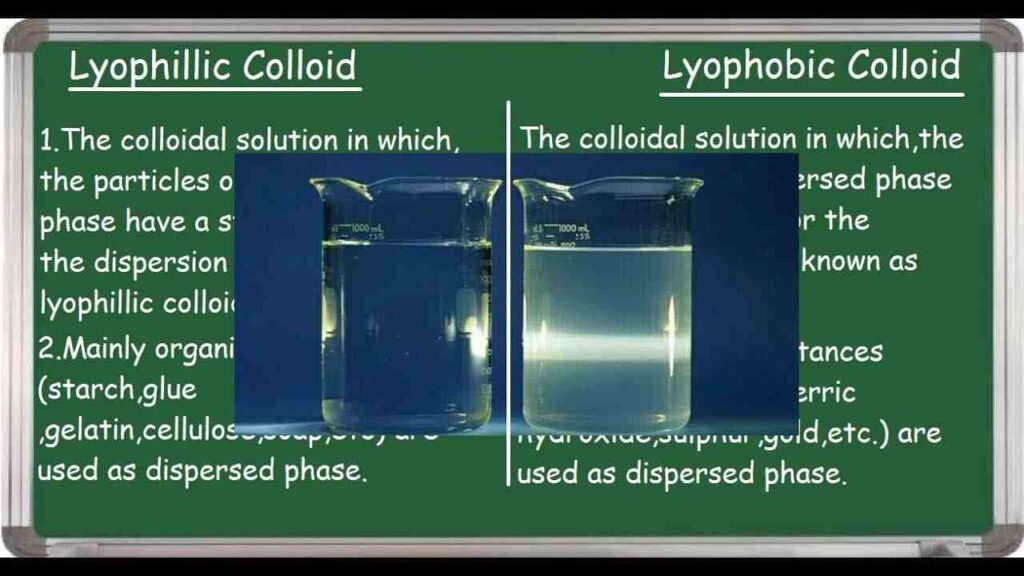
Discover 15 Difference between Lyophilic and Lyophobic Colloids
Lyophilic and lyophobic colloids are two types of colloidal dispersions that differ in their stability and interaction with the dispersing medium. Understanding 15 key difference between lyophilic and lyophobic colloids is crucial for various applications in industries such as pharmaceuticals, paints, and food.
15 Difference between lyophilic and lyophobic colloids
Nature’s Preference: Lyophilic colloids have an affinity for the dispersion medium, whereas lyophobic colloids exhibit a pronounced aversion or lack of affinity towards it.
Stability: Because the dispersed phase and the dispersion medium exhibit stronger attractive forces, lyophilic colloids are typically more stable than lyophobic colloids.
Required dispersion medium: Lyophobic colloids can be dispersed in both polar and non-polar solvents, in contrast to lyophilic colloids, which typically require a polar solvent or dispersion medium.
Particle size: Lyophilic colloids have smaller particles, frequently in the nanometer range, whereas lyophobic colloids typically have larger particle sizes.
Aggregation tendency: Lyophilic colloids have little tendency to aggregate and are easily dispersible, whereas lyophobic colloids have a stronger tendency to do so.
Preparation method: Lyophilic colloids can be made by simply combining the dispersed phase with the dispersion medium, whereas lyophobic colloids usually call for more complicated procedures like condensation or reduction methods.
Surface charge: Lyophilic colloids frequently have a surface charge, which aids in stabilising the colloid, whereas lyophobic colloids may have little to no surface charge.
Coagulation/flocculation tendency: Lyophilic colloids are more resistant to coagulation, whereas lyophobic colloids are more susceptible to it because there are weaker attractive forces between the dispersed particles.
Reversibility after coagulation: Reversibility: While lyophobic colloids may need additional treatments or energy input to achieve re-dispersion, lyophilic colloids can be readily re-dispersed after coagulation.
Viscosity: Due to their larger size and greater concentration of dispersed particles, lyophobic colloids typically have higher viscosities than lyophilic colloids.
Optical properties: Lyophilic colloids frequently have optical transparency, whereas lyophobic colloids, with their larger particle sizes, can scatter light.
Surface tension: Lyophilic colloids have a tendency to lower the dispersion medium’s surface tension, whereas lyophobic colloids have little impact on it.
Molecular interactions: Lyophilic colloids interact with the dispersion medium through extensive hydrogen bonds or other intermolecular interactions, whereas lyophobic colloids do not.
Time stability: Lyophilic colloids can maintain their stability over long periods of time without experiencing significant changes, whereas lyophobic colloids may gradually change or become unstable over time.
Applications: Because of their stability and dispersibility, lyophilic colloids are used in a variety of industries, including medicine, food, and cosmetics. In industries like the paint industry, where simple aggregation is desired for uniform coating, lyophobic colloids are frequently used.
The difference between lyophilic and lyophobic colloids lies in their behavior towards the dispersing medium. While lyophilic colloids form stable dispersions, lyophobic colloids require external agents for dispersion. This knowledge aids in harnessing their unique properties for diverse technological advancements.
Also Read: Explore 15 Key Difference between Hire purchase and Installment system